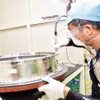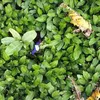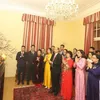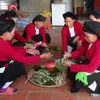Vietnam’s Lunar New Year customs
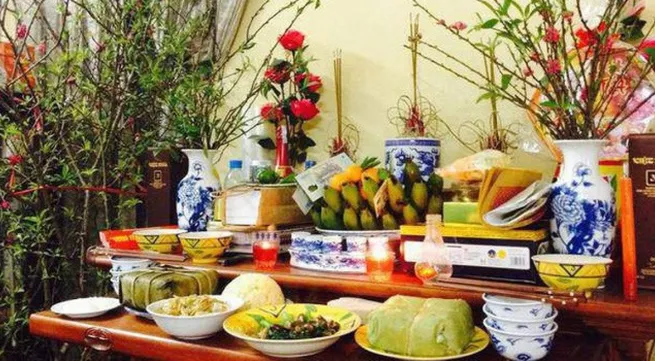
On this occasion, people practice traditional customs to wish for a new lunar year full of peace, luck, wealth, and prosperity. No matter where they reside, family members do their best to reunite for the holiday and visit their relatives and friends.
A couple of weeks before Tet, Vietnamese people visit their ancestors’ tombs and clean gravesites. They light incense at the graves, sum up the family’s major events during the year for their ancestors and invite the deceased to “go home” to enjoy Tet with the living.
On the 23rd day of the 12th lunar month, people bid farewell to the Kitchen Gods. On this day, every family is busy staging a ceremony to send off the Land Genie and the Kitchen Gods of the household on their yearly visit to Heaven.
As the gods make their journey on the back of a fish to meet the Jade Emperor to report to him the affairs of households, tradition dictates the release of live carps into lakes or rivers, which is considered a kindhearted deed to pray for good luck.
The tradition of wrapping sticky rice cakes known as the Chung cake has been passed down from generation to generation since the Hung Kings’ era thousands of years ago, representing wet rice civilization. These cakes are indispensable offerings on the ancestors’ altar in many Vietnamese families.
The Chung cake represents the earth while the round sticky bun called the Giay cake symbolizes the sky, reflecting Vietnamese people’s wish for harmony and luck in the new year.
“When spring arrives, children eagerly watch adults wrapping and boiling Chung cakes. This is a time for family reunion and a reminder of our time-honored tradition. No country in the world makes Chung cakes for the lunar New Year like Vietnam. The cakes are also used as gifts for friends and a common food to share during the new year festival,” said Hanoi resident Dinh Thanh Tu.
Tet flowers are indispensable in each home during the holiday. Flowers are a symbol of happiness, good luck, and joy. In northern Vietnam, people often place small peach blossoms on their ancestors’ altars or decorate their houses with kumquat trees. Meanwhile, people in central and southern regions favor yellow apricot flowers.
Tran Phi Cong who owns Hoang Vu orchid garden in the northern city of Nam Dinh said, “Flowers are loved for their beauty and fragrance and are a beautiful cultural practice during Tet. Flowers bring joy and hope for the coming new year.”
Paying visits to friends and relatives is a beautiful Vietnamese tradition during Tet. Children wish grandparents and parents health and joy while receiving lucky money from adults.
Visiting pagodas during the first days of the new lunar year is another tradition kept for generations to show respect for the Buddha and ancestors.
During Tet, a bamboo pole called the Neu tree is erected in front of the house from the 23rd day of the 12th lunar month until the 7th day of the new lunar year to chase away evil spirits.
“Many rural areas in Vietnam still keep their custom of erecting the Neu tree in front of their houses. It represents the universe and is said to absorb the vitality of heaven and earth. The ancestors follow the Neu tree to “go home” for Tet. The Neu tree is believed to ward off evil spirits and is decorated with different items like wooden carps, firecrackers, and good luck charms, depending on each locality,” cultural researcher Tran Doan Lam said.
Preparing a special food tray on New Year’s Eve, a tray of five fruits, and choosing the first-footers for each household, are some other essential customs to celebrate the new lunar year in Vietnam. These customs have existed for thousands of years and are well-kept by generations of Vietnamese people.
